There are standard guidelines for choosing all your weight training variables. Traditional trainers and textbooks advise us to follow these rules if we want the best results in strength and muscle growth. But sometimes, after you’ve learned the rules, it pays to break them and do things completely “backwards.” This is especially important to understand as you get older and joint pain becomes an issue you have to deal with.
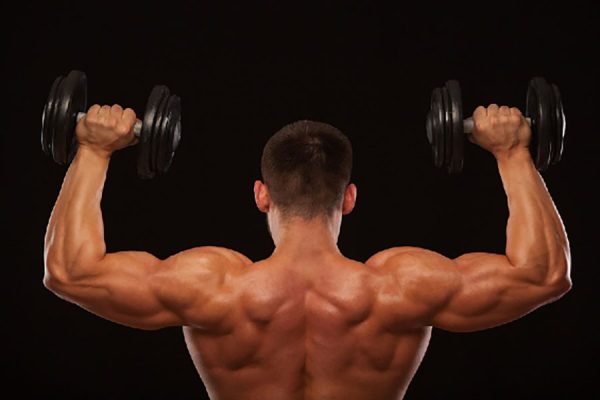
The order of exercises is one of the lifting variables we talk about when designing programs, along with weight, reps, sets, tempo, frequency, intensity, and rest time between sets.
When it comes to exercise order, here’s the widely accepted basic rule:
You should train the heavy, multi-joint compound lifts first, and only then do the isolation exercises. Stated differently, it’s decreed that you should do larger muscles first, and smaller muscles last.
For example, squats, presses, rows, and deadlifts are considered the most productive exercises that give you the most bang for your buck, so they’re typically done first. If you do these big exercises up front when you have the most energy, strength and mental focus, you’ll lift more weight or do more reps, so most coaches tell us this order makes your workout more effective and efficient.
Your energy reserves for a single workout session are limited and get depleted as the workout goes on. At the same time, metabolic stress may add to the drop in performance as a workout continues. So if you do squats last when you’re fatigued, you won’t be able to lift as much as if you did them first when you’re fresh.
This rationale for exercise order makes sense, especially when the goal is powerlifting or building maximum strength. That’s why following this rule for exercise order has become ingrained in weight lifting circles, and it’s rarely given a second thought.
What’s more, bodybuilders and weight lifters are notorious for getting locked into habit patterns. Most lifters will go straight to the bench press first on chest day, and squat first on leg day, on auto-pilot. It’s so habitual, they may do it that way for decades, even through joint pain.
On the other hand, some bodybuilders, after years of doing it by the book, decide to stop, analyze their approach, question the status quo and flip things around. They no longer squat or bench press first every time. When they feel like it, they do those compound lifts in the middle or at the end of their workout. I call this the reverse order training principle.
Why would you do this? There are at least four major reasons: injury prevention, priority training, variation of training, and pre-exhaustion training (when you want to build muscle without heavy weights). Let’s take a closer look at each one.
1. Reverse The Order To Work Around Joint Pain (Injury Prevention Training)
This applies to physique athletes of all ages, but today, many mature lifters, especially after age 40 or 50, use reverse order training quite often, or even exclusively. They continue to gain muscle without suffering through chronic joint pain or injuries that were brought on by years of over-obsession with strength.
When you do squats, presses, deadlifts and other big exercises last, there’s a compromise, because less weight is used and strength gains on that exercise are limited, but there are advantages too, because flipping the order allows many people to train without pain, often for the first time in years (if they’re willing to swallow their egos and lower the weight).
Reversing the order is also a great warm up for compound lifts. With blood in the muscles, body temperature up, and joints loose, it can feel a lot better for aging or aching joints to do squats as the second or third exercise on a leg day, not first.
If I squat first and go heavy, I need a long, thorough warm-up and mobility routine. It often takes me 10 to 15 minutes just to prepare to squat heavy so the work sets feel good. If I skimp on the warm up, I feel tighter and weaker, with more discomfort in my knees, hips, lower back and muscle tissue. This was not the case when I was in my 20s, but it sure is now.
While I still do squats first in a leg workout if I want to use the most weight, I find that as I get older, my desire to see how much more weight I can lift continues to decrease. Maintaining well above average levels of strength and muscle will always be among my fitness goals, but I don’t compete in powerlifting, Olympic lifting or strongman, so maximum strength was never my priority in the first place.
I also believe that as we get older, we mature emotionally as well as physically, and in addition to making health and quality of life our bigger fitness priorities, we stop caring so much what other people think (about how much we lift). No more ego lifting.
We should always acknowledge that increasing weight is the best method of progressive overload, and when all else is equal, the more weight we lift with proper form, the bigger our muscles will get. But for many people, due to injury or simply normal aging, continuing to lift more, year after year is no longer an option. That’s where alternative techniques such as reverse order training come in.
Reverse order training might be the most overlooked and under-rated method for joint-friendly training that assures longevity in the sport for older lifters.
2. Reverse The Order To Build Up Weaker Body Parts (Priority Training)
Symmetry and proportion are important goals for physique athletes. But what if all the muscles of your body aren’t in perfect balance with one another? Instead of following the traditional rules, you could use the “priority training principle” and do the exercise or body parts that need the most work first, because bringing up lagging body parts should be your number one priority.
What if legs are your best body part; they grow like weeds and get stronger easily, but your shoulders are your most stubborn body part? If you’re on a full-body workout where you normally squat or deadlift first, instead you would do your shoulder presses first.
If you’re on a split routine with an upper body day and your back is developing to your satisfaction but your chest is not, train your chest first.
If you have weak calves or abs, don’t leave them to last because they’re small muscles, do them first.
If your hamstrings are lagging behind your quads, and if you’re on a split routine with a leg day, you might do hamstring exercises such as Romanian deadlifts and leg curls first, before squats. (Weak hamstrings are common, because they’re neglected or left to last).
If you don’t pay attention to priority training, then your strong points get stronger, your weak points get weaker, and you get even more out of balance on strength, symmetry and appearance.
3. Reverse The Order To Give a New Stimulus To Your Muscles (Novelty or Variation of Training)
It’s important to change your workout programs regularly because your body adapts to the same program over time and your progress stalls. The more years you’ve been training, the more quickly your body adapts. This is normal physiology, but it means you can’t keep doing the same thing forever and expect to keep making the same progress.
Experienced bodybuilders may see progress slow down or stall in as little as 4 to 6 weeks on the same workout. If a lifting program is periodized and well-designed, you may not see any hard plateaus for 8 to 12 weeks. One rule worth following most of the time is that as long as you keep making progress, keep using the same plan. However, nothing works forever and eventually you must change training variables, rotate workouts and try new techniques.
When most people think of changing their workout, they think first about switching the exercises or the repetition and loading patterns, but changing the order of exercises is another option. Changing exercises is important, but a simple change in the order can be enough to breathe new life into an old routine – it’s a novel stimulus that can trigger new progress.
I’ve done this in my back training with great success. For years I always did pullups first because it’s a difficult exercise. Many people struggle doing pullups at all and doing them last on back day is ridiculously difficult. For me, that was the whole idea – give my upper body pulling muscles a completely new challenge. Not only did it stimulate new growth, the elbow tendinitis I had before when doing heavy weighted pullups first went away.
I also started doing deadlifts second, after pulldowns, and to my surprise, my performance actually increased while my incidence of muscle strains decreased.
On a side note, being willing to change your exercise order also comes in handy on the spur of the moment at times if you train during peak hours at a crowded gym. You could sit around checking your Facebook feed while you wait for a squat rack to open up, or you could go do some dumbbell lunges first, or do hamstrings first for a change. Why waste time?
4. Reverse The Order To Build Muscle Without Maximum Weights (Pre-Exhaustion Training)
It may be unconventional, but when physique development is more important than strength, experienced bodybuilders may put an isolation exercise before the compound exercise. This is called pre-exhaustion.
Pre-exhaustion can refer to doing the isolation exercises first, using all straight sets, but it also refers to a type of superset. A few examples:
- Do leg extensions first, then superset to squats (quads)
- Do dumbbell flyes, then superset to bench press (pecs)
- Do dumbbell lateral raises and superset to overhead presses (delts)
If you’ve tried it before, you know that doing leg extensions before squats will reduce the amount of weight you can squat, doing flyes before bench presses will reduce the amount you can bench press and so on.
At first, doing something that makes you lift less may seem counterproductive, and that’s true if maximum strength in the compound lift is your number one goal. But there are good reasons why pre-exhaustion is popular with bodybuilders.
First, it allows you to work a muscle beyond the normal point of fatigue. If you do an isolation exercise like dumbbell flyes first and take it to failure, the pectoral muscles are completely exhausted on that exercise. You could not do another repetition of flyes if you tried, so that’s the logical point where most people stop working. But if you superset directly into a compound exercise like the bench press, you can continue working your chest even further because the assisting muscles – your triceps in this case – are still fresh.
Because your strength is compromised (or number of reps reduced) in the second exercise of a pre-exhaust superset, compared to straight sets or post-exhaust, this technique has been criticized in strength training literature for being less effective. But if your primary goal is muscle size, not maximum strength (and especially if you’re doing it on purpose to work around joint pain), it doesn’t matter if you’re using less weight. It’s not necessary to train heavy straight sets, lift heavier than last time or do compound movements first all the time.
Another time pre-exhaustion is useful is if you don’t have access to heavy weights. Many people got stuck training at home during the coronavirus pandemic. I was one of them. All I had was a set of bands and dumbbells going up to 50 pounds. On shoulder day, I usually overhead press a lot more than that. So I used the pre-exhaustion technique (the reverse order principle). I did bent over lateral raises first, then side laterals second, and presses last. By then, my delts were already fatigued and 50 pounds felt plenty heavy. This is not an optimal workout for maximal strength, but it’s great for building muscle.
A Real World Example
Here’s another example of how I’ve used the reverse order training principle with tremendous success.
I started lifting when I was 14, so I’m into my fourth decade of training. I’ve never been a strength athlete per se, always a bodybuilder, but I’ve done my fair share of heavy lifts. While I don’t have any debilitating injuries that prevent me from training, years of lifting have brought on elbow tendinitis, a partially torn pec and a herniated disc. I’m not one of those freaks with indestructible joints – I feel that I’m susceptible to injuries if I’m not careful.
I don’t compete anymore, but continuing to train for life pain-free is important to me, so I’m always looking for ways to build or maintain muscle without aggravating old aches and pains or creating new ones. In addition to using ultra strict form, density training and a lot of continuous tension reps, I use the reverse order training principle often.
If I were training with the traditional style on leg day, a typical quad workout would be in this order:
- Squats
- Lunges
- Leg Extensions
This follows the regular rule for doing the big compound exercise first and the isolation exercise last.
When using the reverse order training principle, I still squat, but I change the order so squats are second or even last. A recent leg workout looked like this:
- Leg Extensions
- Lunges
- Squats
Traditional strength training theory would say that this is backwards, but for me, it was perfect for my primary goals of increasing or at least maintaining leg muscle size while keeping risk of injury and joint pain flare ups low.
When doing squats last, I had to do them lighter than usual, but they felt 100% better in the muscles and joints. When I squat last (or second in order), I feel warm, loose and mobile (which also means my warm up routine doesn’t have to be as elaborate, since the first two exercises warm me up for the squats). It’s also more enjoyable because I’m not filled with fear about low back strains.
When doing them first on leg day, I recently squatted 335 for sets of 5 reps and 315 for sets of 8 to 10 reps, but going even heavier feels more precarious and risky to me as the years go by. I also didn’t feel the thigh muscle contractions in those lower rep sets the way I wanted to. When I changed to the upper hypertrophy rep bracket (10-15 reps), used continuous tension (no lockout) and moved the squats to last, I started with only 225 the first time and built up to a moderate 275 pounds. I used 20 to 25% less weight but the workout felt more intense, and it was more enjoyable.
Here’s a key point: when I moved my squats to last, I started at only 225 pounds but built back up to 275 pounds. I still used progressive overload! I also hit a “pre-exhausted continuous tension squat” personal record (PR). In my view, squats first and squats last are two different things and continuous tension reps are far more difficult than regular reps. So when keeping a training journal you can have separate tracks of progression and separate PRs. Your PR for squatting last will be much lower than it is for doing it first, but it’s still a PR in my book.
Parting words
In closing, let me re-emphasize that the whole idea in bodybuilding pain-free for life is to knowing when to train heavy and when not to, finding strategies to “make a lighter weight feel heavier” and learning how to achieve progressive overload and stimulate muscle growth without always feeling pressure to add more weight. You have many choices for doing this and the reverse order principle is one of the most overlooked.
Give this one a try and then let me know what you think!
Train hard and expect success,
Tom Venuto,
www.BurnTheFat.com

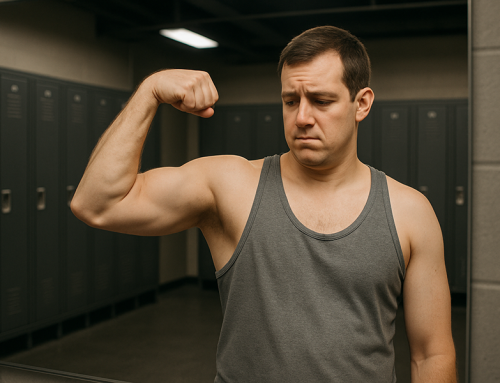
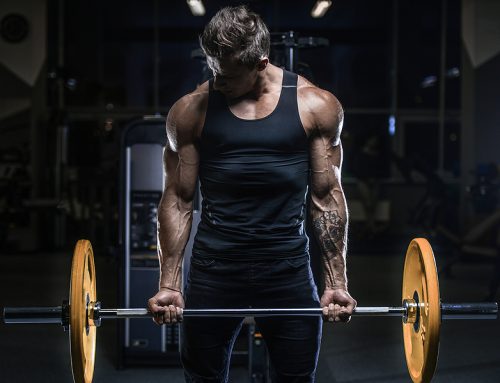
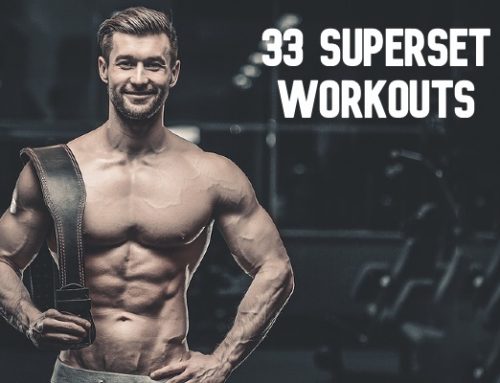
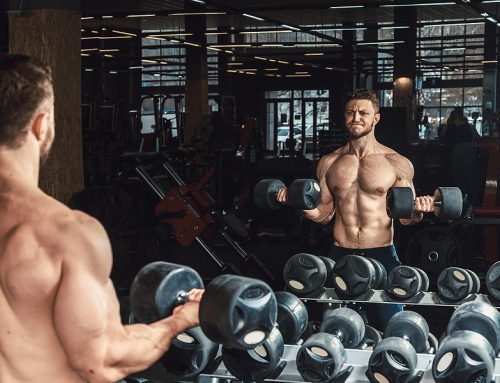
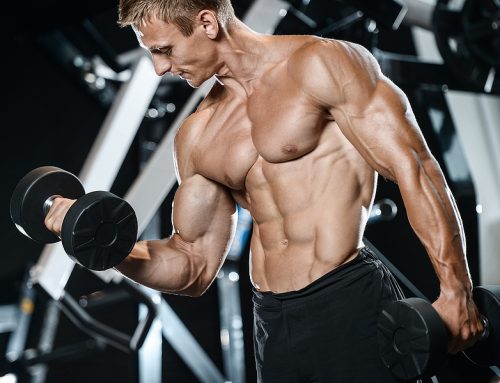
Another brilliant article, thank you.
I thought your article was terrific. Now – I am an old…er woman and cannot do what you can do. As I do not exercise a lot, I do like a schedule on what I can do. Is there a programme to do reverse exercising the whole body for women who are not the way they used to be??? I do not want to exercise 30 minutes every day, but I could handle 10 to 15 minutes a day. Thanks.
Joanne
hi joanne. Start with whatever you can. You probably don’t need to worry about reverse order training if you’re just starting out. 15 minutes of basic resistance training not worrying too much about exercise order is a good way to begin. Example: 1. squat (bodyweight squat) 2. pull (dumbbell or band row) 3. push (push up or modified push up or dumbbell bench press) 4. abs/ core.
Great article! I appreciate it as a 67 year old. I always wondered why people did pre-exhaust. Post-exhaust always made more sense to me. Now I know.
Glad it was helpful Gray. Indeed, pre exhaust is counter-intuitive, but makes sense when you put in a specific context.
Always great as usual.Keep up the good work Tom.
Thanks!